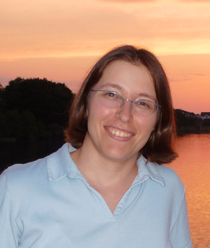
Best-selling author Jae has had a busy nine years since she joined Ylva. She reflects on the changing world of publishing, her writing journey, and her popular lesbian historical book Backwards to Oregon, which is celebrating an anniversary of its own.
Q. Let’s start at the very beginning. Nine years ago, on October 21, you published your first book with Ylva. What made you decide on your new publisher, and why did you leave your old one?
A. I’m really grateful to L-Book, my first publisher, which was probably the pioneer in lesbian fiction ebooks. But since I was beta reading for Astrid Ohletz, Ylva’s owner, I got to witness Ylva Publishing being born. I really liked its focus on quality, good editing, and diversity—including an international focus. That allowed me to keep writing my books in English but to then also translate them into German, my native language, to make them available to a wider readership.
Q. What was your first book with Ylva? Do you ever look back on it and itch to make changes now that you’ve had nine more years evolving as a writer?
A. My first book with Ylva was Manhattan Moon, a novella that is part of my Shape-Shifter Series. It tells the story of Shelby, a shy coyote shifter with a shifting disability, who has a crush on a human nurse she works with.
Manhattan Moon is definitely the book that I’d most like to change of all of my books. Don’t get me wrong; it’s not bad or anything, but if given the chance, I would expand it. I’d show more about how they navigate their relationship after getting together. Readers really enjoyed them as a couple, so they wanted them to have a full-length novel.
Q. What have you learnt over the past nine years about your writing? What mistakes, what improvements have you taken to heart?
A. I first started writing at age ten or eleven and devoured every book on writing I could find. By the time I joined Ylva, I had published five novels. I learned from each and every one—working with different editors, getting feedback from readers and reviewers. So I was really happy that I got to revise and republish my first five novels with Ylva.
I took out a lot of bad habits—like getting a bit too creative with dialogue tags (she demanded, she agreed, she confirmed, she promised…), when a simple “she said” would have been the best choice.
I’ve continued to learn since then. The most important thing I learned from readers is that they like to linger with the couple after their happy ending just a bit. After accompanying them through a lot of struggles, they want to enjoy seeing them happy for a while, so I learned not to wrap up my books too quickly.
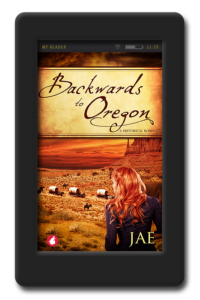
Q. October 21 is also the 170-year anniversary of Luke and Nora arriving in Oregon in your historical romance Backwards to Oregon. Luke dressed as a man in the Wild West in order to survive. Where in the LGBT+ and/or gender spectrum do you think Luke fits?
A. Since Luke lived in the mid-19th century, she didn’t have any role models or a concept of what it means to be trans or nonbinary. But living her life as a rancher, husband, and father is way more than a disguise for her.
Some of my readers read her as a butch lesbian, some as a trans man, and some as a sapphic nonbinary person. I’m fine with any way you see her. When I wrote the book, I didn’t think too much about it. Luke was just Luke to me, and I didn’t put a label on her because, back then, she wouldn’t have used one for herself either.
I think it shifts a little between Backwards to Oregon and Hidden Truth, which is set 17 years later. Having Nora in her life made Luke a lot more at ease with who she is. I have a feeling Luke might identify as a nonbinary lesbian or a sapphic nonbinary person if she lived in our modern world.
Q. What do you think Luke and Nora would make of today’s world where they don’t have to pretend to be a straight cis couple to live together?
A. Knowing Nora, who grew into a mother figure and teacher for many, she would probably be very involved in the LGBT+ community and try to make the world a place where Luke can be fully herself without fear of being judged or hurt.
Luke would think today’s world is great, of course, but she would also see that there’s so much still left to do until all human beings—men, women, and nonbinary people; cis and trans people; straight and LGBT+ people—are equally valued. So Luke probably wouldn’t fully trust it.
But to be honest, it’s hard for me to imagine Luke growing up in an accepting world. Luke was so much shaped by growing up at a time with very strict ideas of how women should behave and what kinds of freedoms she was allowed to have. If she had grown up under different circumstances, I’m sure she would be a very different person. There would be no need to constantly be on her guard, to keep others out…
In a way, Nora and Luke tried to establish a world like that on their ranch, especially after Luke revealed her identity to their daughters and they found out one of their daughters prefers the company of women too. But they all knew that, beyond that small world of their ranch and their family, there is a bigger world that is not as accepting—and they all have to code-switch as soon as they step out of their world and into that other world.
But there’s progress with every generation of Hamiltons. We know that their daughter Nattie became the first female veterinarian in Oregon; their daughter Amy did what Luke couldn’t—run the ranch as a woman—and their granddaughter Lucy became a doctor. People like the Hamiltons were a big part of what made our more accepting world happen.
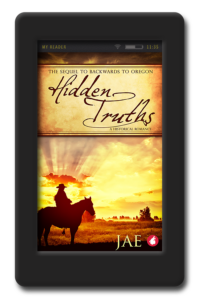
Q. Are you marking the Backwards to Oregon anniversary in any special way?
A. Yes, it’s not just my nine-year anniversary of joining Ylva, October is also the 170-year anniversary of Luke and Nora arriving in Oregon. I thought I would celebrate by giving readers what they want most—a new story in their favorite series. When readers join my Facebook group, I always ask them what their favorite book of mine is, and the most-often named book is, by far, Backwards to Oregon.
Pretty much from the moment it was published, readers have been begging me for a sequel. I wrote not just a follow-up novel (Hidden Truths) but also a short story collection (Beyond the Trail).
But there’s still so much more to tell about Luke and Nora, so I asked readers what kind of story they would most like to read. They overwhelmingly voted for a story set right after Luke and Nora arrived in Oregon, so that’s the story I wrote.
Given the anniversary, I think the story is a perfect fit, and I hope readers enjoy it as much as they enjoyed the rest of the series!
Q. What do you think the appeal of the Backwards to Oregon series is?
A. I think it’s the characters. I still get a lot of feedback emails that start with “I don’t usually read historical romances, but I loved the Oregon series…”
Luke in particular seems to be everyone’s favorite. She’s a very complex and interesting character—aloof and tough on the outside, but gentle and awkwardly tender on the inside. She has lived a very lonely life so far, keeping people at arm’s length—physically and emotionally—so no one would discover that she’s not a man.
But then she ends up married to Nora, a former prostitute with a three-year-old daughter. Luke really doesn’t know what to do with either of them. The scenes of her interacting with Amy, the three-year-old, and heroically trying to resist Nora’s attempts at seduction are most readers’ favorites.
Both Nora and Luke have always just relied on themselves, not trusting anyone, and they don’t believe in love. I think watching as they slowly learn to trust each other and become a team—and grow into themselves—is what readers enjoyed most.
Q. How do you think you’d go do the Oregon Trail yourself? How far do you think you’d make it? What would be your biggest personal challenges in attempting the Backwards to Oregon life?
A. After six months of intensive research for both Backwards to Oregon and Hidden Truths, I sometimes felt I could get up on a horse and ride to work in the mornings! In reality, I’ve never even been on a horse (not counting tiny little ponies in my childhood). I have all of the theoretical knowledge—I know how to make butter, cross a river, or build a cabin—but I’m not the most practically inclined person.
I’d like to think I’d make it all the way to Oregon because I’m a great planner. My wagon would be packed with all the right things that ensure survival. And I’m stubborn as hell and good at adapting to new situations.
My biggest challenge in doing the Oregon Trail would probably be my very bad eyesight. Trust me, you don’t want to put me on hunting or guard duty or any other duty that requires handling a gun. Come to think of it, my cooking is nearly as dangerous… But if Nora has learned, so could I!
Q. Publishing has evolved so much in the past nine years. What do you see as the biggest changes?
A. Back in 2012, ebooks still hadn’t reached the market share that they have now, and the bestseller lists on retailers such as Amazon and Apple Books were mostly populated with books by traditionally published authors.
Now, ebooks are by far the most popular medium for most readers, and audiobooks are quickly gaining popularity too.
A lot more authors are self-publishing. We are fortunate to live in a time where there’s a wide variety of books about sapphic characters available. Even some of the most avid readers who read 350+ books a year can no longer read every sapphic book published in any given year.
I would say that’s the biggest change—the number of books published. On the one hand, having the choice of such a wide variety of books is wonderful. On the other hand, it makes it harder for readers to find the real gems and for authors to stand out and get any attention for their books.
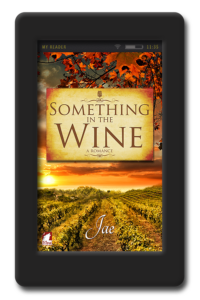
Q. Do you think people’s tastes have changed much in the types of books or tropes they love?
A. I think the most popular tropes have stayed pretty much the same for the last fourteen years since I first got into publishing. Of course, there are trends every now and then.
For example, a few years ago, everyone seemed to be writing fake relationship romances. My first full-length novel with Ylva, Something in the Wine, was written before that trend started. It seemed some readers grew a little bored of them for a while, but as a whole, fake relationship romances continue to be really popular.
Q. Where do you imagine the publishing industry will be in another nine years?
A. Big publishers are getting into LGBT+ books, and that’s a trend that will probably continue. More and more authors will self-publish their work. Smaller queer presses will only survive if they can adjust to being a service provider instead of a gatekeeper. They’ll have to offer authors some added value—something that will be hard or too expensive for authors to do on their own. I’m thinking of audiobooks or translations of books into languages other than English.
Q. What is your favorite lesbian fiction book that you didn’t write?
A. Book, singular? That’s such a tough question! Even narrowing it down to just a handful is difficult. Depending on my mood, it’s either Ask, Tell by EJ Noyes, And Playing the Role of Herself by KE Lane, Jericho by Ann McMan, or Without a Front by Fletcher DeLancey.
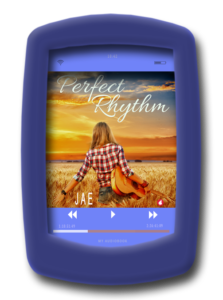
Q. And what’s your favorite audiobook?
A. You didn’t say “that you didn’t write” for this question, so I’ll name my novel Perfect Rhythm, which is narrated by the incredibly talented Angela Dawe. It’s the audiobook I have listened to most often. Angela brings so much to the experience that I keep forgetting that it’s my own book she’s bringing to life.
Q. You’ve mentioned writing about shape-shifters with Manhattan Moon, historical romance with Backwards to Oregon, and you’re most famous for your slow-burn lesbian romances. But if you could write in any genre that you haven’t before, what would it be?
A. I grew up reading a lot of science fiction, and I’d love to write a sci-fi romance one day. There aren’t a lot of them out there—especially not sapphic science fiction romances—so I will write one for sure. I already have a plot idea. I just don’t know when I’ll get around to writing it.
So many ideas, so little time…
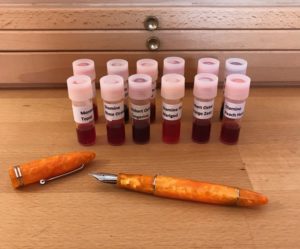
How do you celebrate when you finish a book?
I’m gaining a reputation for celebrating each book with ice cream or cheesecake—preferably both. And I also usually buy a new fountain pen or a new ink (pictured). Like Anja in Paper Love, I’m a fountain pen addict.
For my latest novel, Chemistry Lessons, I had peanut butter cup ice cream and cheesecake, and I bought a fountain pen and a bunch of ink samples that looked like something Regan would cook up in her chemistry lab.
Thanks, Jae. We hope there are many more celebrations to come!
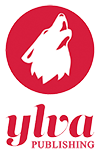

Fantastic interview! Jae has my complete admiration and respect. She’s a supremely talented author and is by all appearances a stellar human being. Thank you for featuring her!
To Jae:
Thank you for being writer, for being able to transport me from everyday life (more crazy by the minute due to covid), to a world where all is possible. Especially thank you for ‘Backwards to Oregon’ which I re-read almost as soon as I finished it. It provided a great insight to what it must have been like in the days when that part of the world was so ‘new’, and add the wonder of two women not only finding their own way forward but pushing to get it. I have read quite a few books about women who lived as men, especially in the American civil war, and of all that was mentioned/touched on, they never mentioned something that I was curious about, and probably not only me, i.e. what did they do when it was ‘period’ time. So thank you for providing a possible answer. Thank you for your books and please keep writing. Cheers, Sarah
Great questions, always fun to get a peak behind the curtain from two stars in the WLW world.
Thanks for the insight…having read all of Jae’s books i am so grateful to her because i have rediscovered the world of queer books and am now reading so many more…cant wait for the update to the Oregon Series, where it all started for me…many thanks
Terrific interview from one of my favorite authors!
Oh, Jae, you’re going to take all my monies, aren’t you! : )
Because I’d jump head-and-heart-first into buying a full length novel continuation of “Manhattan Moon”. Real talk.
I’m a Paranormal Romance geek, and by that I mean: I enjoyed Manhattan Moon so much that I experienced something akin to withdrawal when it ended much, much, much (did I say much) too soon. Shelby is such a unique person within her shifter community due to both the expression of her emotions and her shifter situation; she really stood out as a character deserving more exploration. So, yes, fingers crossed you’re given that chance of which you’ve spoke to revisit Shelby & Nyla’s romance.
I enjoyed the Shape-Shifter series on a whole, especially the 2nd book “True Nature”, Kelsey is my #bookbae. Truly. Love. Her.
Given the goodness we’ve received so far from the series, there’s definitely space for Jae to expand on whatever she so desires for her shifters, whether it’s exploring more of Shelby & Nyla’s romance (my money is on standby, just let ya girl know when she can pre-order that book, but, yeah, I suppose I must wait for the book to be written first, but only if that time machine thing doesn’t pan out for science and all, lol), or diving deeper into the established worldbuilding and mythos, or introducing new characters. Or, you know, all of the aforementioned and more. : )
Congrats on the milestone anniversaries!
How come the newest addition to the series on Amazon is not the English version? I am so looking forward to reading the next chapter.